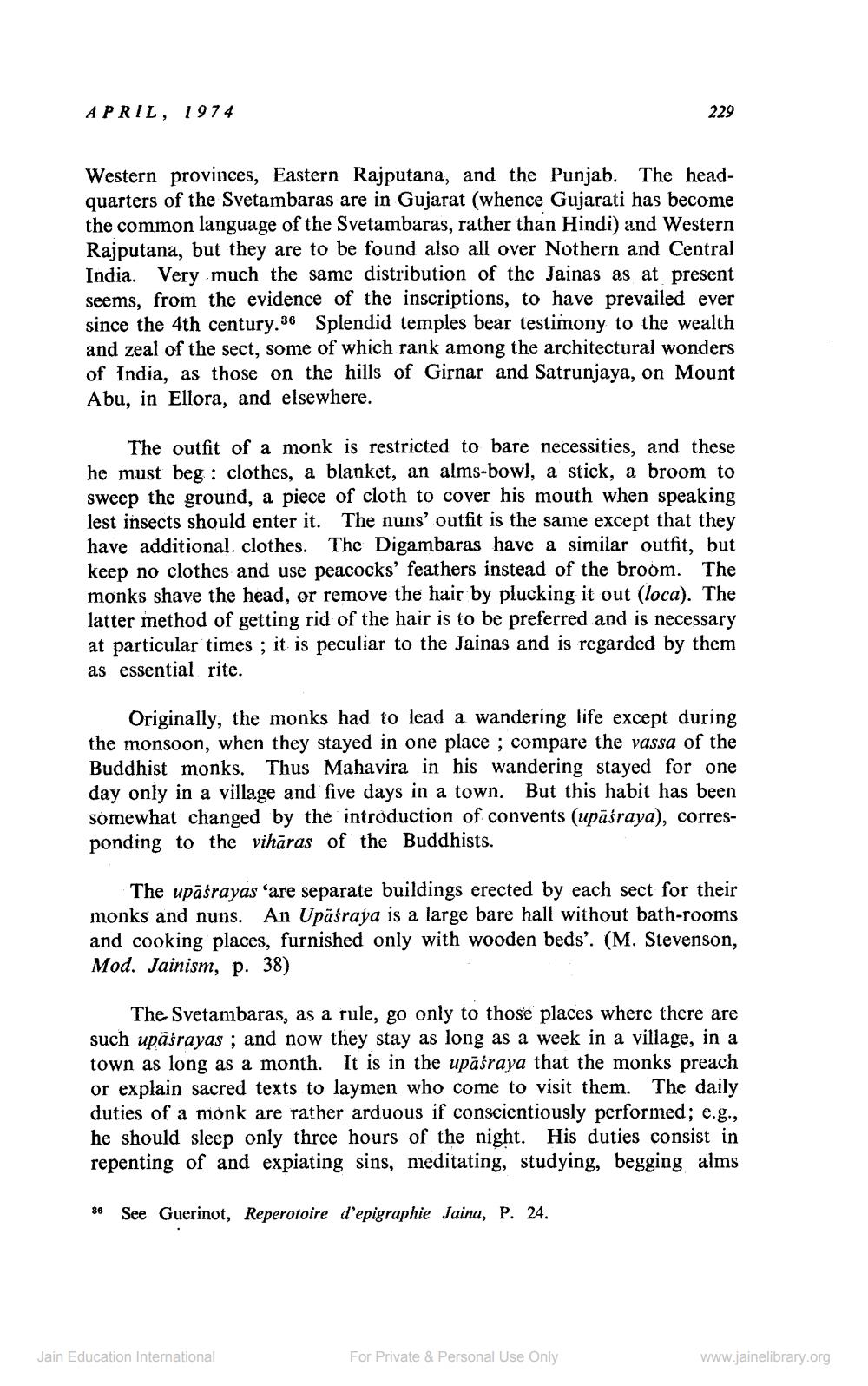________________
APRIL, 1974
Western provinces, Eastern Rajputana, and the Punjab. The headquarters of the Svetambaras are in Gujarat (whence Gujarati has become the common language of the Svetambaras, rather than Hindi) and Western Rajputana, but they are to be found also all over Nothern and Central India. Very much the same distribution of the Jainas as at present seems, from the evidence of the inscriptions, to have prevailed ever since the 4th century.36 Splendid temples bear testimony to the wealth and zeal of the sect, some of which rank among the architectural wonders of India, as those on the hills of Girnar and Satrunjaya, on Mount Abu, in Ellora, and elsewhere.
The outfit of a monk is restricted to bare necessities, and these he must beg: clothes, a blanket, an alms-bowl, a stick, a broom to sweep the ground, a piece of cloth to cover his mouth when speaking lest insects should enter it. The nuns' outfit is the same except that they have additional. clothes. The Digambaras have a similar outfit, but keep no clothes and use peacocks' feathers instead of the broom. The monks shave the head, or remove the hair by plucking it out (loca). The latter method of getting rid of the hair is to be preferred and is necessary at particular times; it is peculiar to the Jainas and is regarded by them as essential rite.
Originally, the monks had to lead a wandering life except during the monsoon, when they stayed in one place; compare the vassa of the Buddhist monks. Thus Mahavira in his wandering stayed for one day only in a village and five days in a town. But this habit has been somewhat changed by the introduction of convents (upäśraya), corresponding to the viharas of the Buddhists.
229
The upāśrayas 'are separate buildings erected by each sect for their monks and nuns. An Upäśraya is a large bare hall without bath-rooms and cooking places, furnished only with wooden beds'. (M. Stevenson, Mod. Jainism, p. 38)
The Svetambaras, as a rule, go only to those places where there are such upãśrayas; and now they stay as long as a week in a village, in a town as long as a month. It is in the upasraya that the monks preach or explain sacred texts to laymen who come to visit them. The daily duties of a monk are rather arduous if conscientiously performed; e.g., he should sleep only three hours of the night. His duties consist in repenting of and expiating sins, meditating, studying, begging alms
36
See Guerinot, Reperotoire d'epigraphie Jaina, P. 24.
Jain Education International
For Private & Personal Use Only
www.jainelibrary.org




